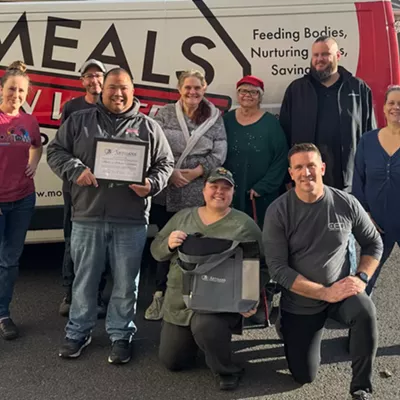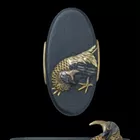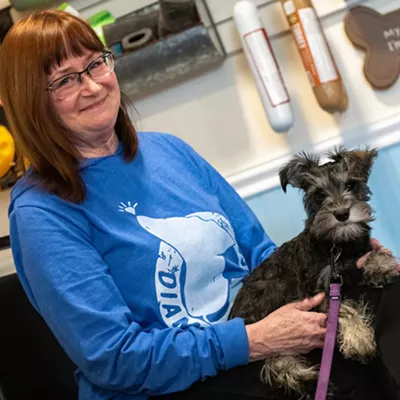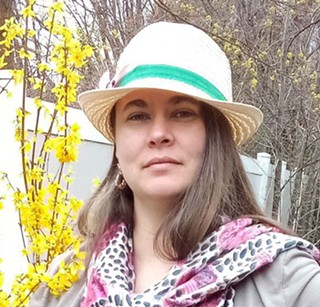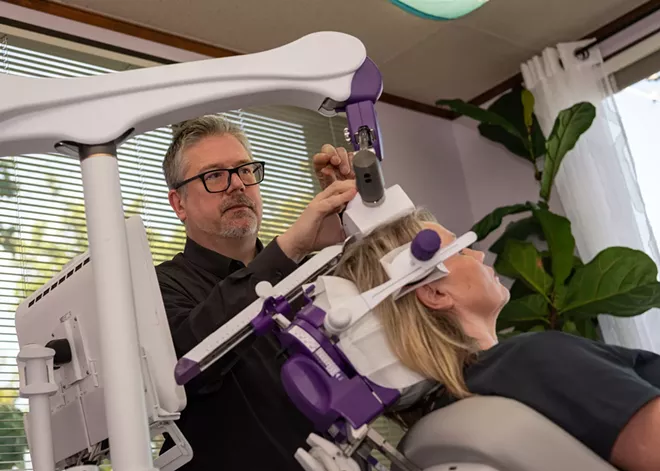
Transcranial magnetic stimulation sounds like — and looks like — something you'd find in a science fiction movie, but it's a real treatment option. This noninvasive therapy uses strong magnets to create an electromagnetic pulse to stimulate nerve cells in the brain.
People with treatment resistant depression, depression with anxiety, and obsessive-compulsive disorder are finding welcome relief with transcranial magnetic stimulation, or TMS.
"We've had an increase in depression and anxiety since COVID," says Laura Berg, a clinical social worker and therapist at Revive Counseling. Medication "helps some people, but some people need something else, so it's really needed at this time."
With TMS therapy "we're seeing about an 83% improvement rate of depression symptoms and about 62% in remission," Berg says.
Bill Voss, who holds a Ph.D. in clinical psychology, knows the power of TMS firsthand.
"I have been dealing with depression most of my life. In 2019 [I] had a bad depressive episode and had to take off from work," Voss says. "I tried so many different medications and psychotherapy, and nothing really worked."
Then TMS was recommended to him. "It brought me out of my depression because it's a more effective treatment," Voss says.
He was so affected by his experience that he delved into the research about transcranial magnetic stimulation, and wondered why the treatment wasn't more widely available. In 2020 he opened River City TMS.
So, how exactly does transcranial magnetic stimulation work?
"It uses electromagnetic pulses to enhance the network in the brain to support our neurotransmitters and receptor sites — the brain's superhighways — to better and more effectively transport dopamine, serotonin, and all those things that make us happy," says Colleen Moore, a nurse practitioner who runs the TMS program at Northwest Neurological.
"Basically, a magnetic pulse creates an electric pulse in the brain. You're not magnetizing the brain, it converts to electricity in the brain. The brain runs on electricity," says David Greeley, a neurologist with Northwest Neurological.
People with depression essentially may have parts of their brain "shutting off," and as the depression worsens more areas of the brain shut down, he explains. Think of it "like somebody living only in their living room and they don't go outside. It's the same way your brain is living within a very small space."
To begin TMS therapy, as with any other medical treatment, clinicians review their patients' health history and after getting clearance, treatment can commence. First, the brain is mapped using the TMS machine to find the primary motor strip on the brain's left side for proper placement of the magnet. During treatment the patient sits in a reclined position while a cushioned magnetic coil is placed against their head.
River City TMS and Northwest Neurological both use NeuroStar machines. These were the first to receive FDA approval, and in April 2024 they became the only machines authorized for treatment of people between ages 15 and 18.
"The way we [use] our machines is highly regulated," Greeley says. "They're very clean, safe, and [a] secure space."
The treatment regimen for major depressive disorder follows a relatively intense schedule: Patients have 36 consecutive sessions (that's every day except on weekends), each lasting about 20 minutes. There's no special preparation required before the treatment, nor any restrictions after the appointment.
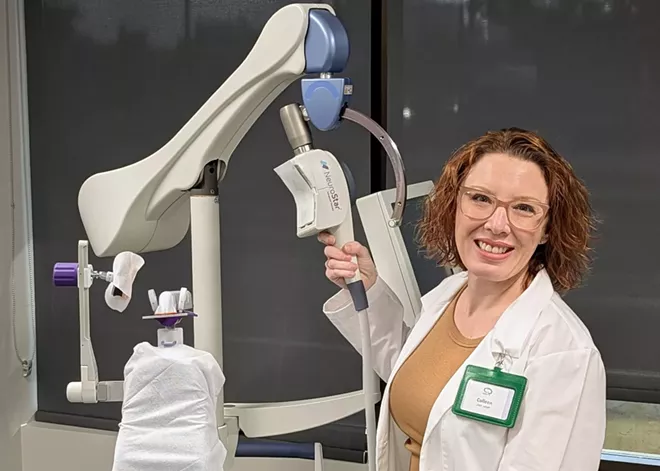
Moore notes that at the beginning people are concerned about the length of time involved, but by the conclusion of their course of therapy, patients are worried about the sessions ending, including not seeing the people they've connected with nearly every day for seven or eight weeks.
As for the patient's experience, "It feels like a tapping, up and back from your eyebrow area [in] the skull or the scalp. But it doesn't hurt," Voss says.
The treatment may also produce a tingling, warming sensation, and some patients develop a headache during the session. Fortunately, most of these effects subside with subsequent treatments. It's worth noting that for some people, the side-effects of antidepressant medications are often not temporary and can include a whole host of unpleasantness like insomnia, dry mouth and weight gain.
"The first [antidepressant] medication that you take is effective about 27.5% [of the time], and by the fourth medication it goes down to 6.9[%]. As the likelihood of medication [working] is decreasing, the likelihood of the side-effects increase," Berg says.
How do patients know the TMS treatment is working? The first thing most people see improving with TMS therapy is their sleep. Following that, anxiety and worry begin to decrease, and then "there's a whole cascade of positive benefits [after that]. People respond quicker to TMS than antidepressant medication or therapy," Voss says.
"It snowballs around session 20. People get better even faster. It seems like the more treatments you get, the more likely you are to respond," Voss says.
Berg is amazed by the transformation in clients who are suicidal before TMS treatment. After TMS, "they find a purpose to live, and then that suicidal ideation goes away. People say they've never experienced the excitement that they can feel after TMS," she says.
The positive effects of TMS can last 12 months or longer, especially when combined with the healthy habits people develop when feeling better, like more social contact.
Like any treatment, TMS isn't appropriate for everyone.
"At the moment we're cautious of individuals who have metal implanted in their cervical spine, their scalp — such as a cochlear implant, in the skull, or stenting," says Chris Cox, a physician assistant at River City TMS. "If there is a cardiac pacemaker that's within a certain distance from the coil we would defer to a cardiologist. And then anybody with a seizure disorder."
The FDA has approved TMS for treatment of major depressive disorder, obsessive-compulsive disorder and smoking cessation. There are numerous other conditions that early research has shown may potentially improve with TMS therapy, including migraines, traumatic brain injury, concussion and substance abuse disorders. "New research is coming out all the time," Voss says. "Researchers all over the world are putting these magnets on different parts of people's heads to see what is affected."
Magnets "have a lot of secrets that we still haven't unlocked in the common sciences," Cox says. "A lot of people [with depression] suffer in silence because it's stigmatized in our society. Having a treatment that not only works but it's more effective than any antidepressant brings great hope not only to our patients, but our city."
Funding the Future
The NWN Foundation supports medical and behavioral health services for underserved populations.
One goal for the foundation is offering payment assistance for transcranial magnetic stimulation treatments to help patients whose insurance doesn't cover the therapy for depression. The foundation is also offering support for research using TMS to treat migraines, traumatic brain injuries and dementia — areas that show promise but are not currently approved by the FDA.
After launching a website in July, the foundation is beginning to seek financial assistance. One area of interest to researchers is treatment of substance use disorders, and in particular, fentanyl abuse.
"It's a big deal. It's impacting our community members," says Colleen Moore, a nurse practitioner at Northwest Neurological, who's on the foundation's board of directors. "TMS and lots of other treatments that don't involve medications have the opportunity to really reduce the burden on our community [and] improve the quality of life of community members," she says.
"There's potential, through the foundation, to run machines in the community [for ailments] that I can't [treat] out of my private practice," says Dr. David Greeley, a neurologist with Northwest Neurological and also a foundation board member. Speaking at his office on Spokane's West Third Avenue, he says, "We have two or three people sleeping on our lawn today. It would be nice to be able to help [the people out there] as much as we help the people in our office."
The foundation has three machines in storage that nonprofit organizations, like behavioral health or methadone clinics, could utilize. "We'd be able to serve a lot more people," Greeley says.
Learn more at www.nwn.foundation
— CARRIE SHRIVER
When Medication Isn't an Option
As a psychiatric nurse practitioner, Kiira Tietjen says most of her training and career focused on medication management combined with therapy for depression. But she was frustrated.
"I was just seeing people that weren't getting better. I came across TMS and it is really a game-changer for people that have been on so many medications and are just stuck."
In addition to helping those for whom medications haven't worked, Tietjen, who uses the Neurostar machine at her practice, New Chapter TMS, says the treatment offers help to those who may be reluctant or unable to take antidepressant medication.
"For pregnant or breastfeeding individuals, there are no systemic implications," because the treatment is confined to the brain itself, she notes.
Tietjen says TMS may help another group that's restricted from taking antidepressant medications: pilots.
In October 2023, Joseph Emerson, an off-duty Alaska Airlines pilot under the influence of psychedelic mushrooms, tried to seize control of the flight he was on from Everett to San Francisco, forcing an emergency landing in Portland. He later revealed he had been reluctant to seek medical therapy for depression due to Federal Aviation Administration flying restrictions on pilots who are taking antidepressants.
Tietjen says a condensed one-week protocol of TMS that's currently under investigation might provide an option for pilots and others, particularly those in the military, whose jobs restrict use of antidepressant medications.
"Can we get a pilot in? Can they take a week off work for the condensed burst of treatment and go back to their work without having limitations they would have with medications?" she says. "This is a completely different way to approach your depression... We're going to do some physical therapy on your brain. It is all in your head. Your brain is literally not working the way that we want it to be."
— ANNE MCGREGOR








